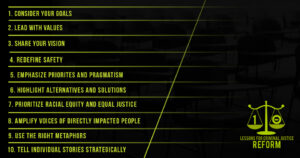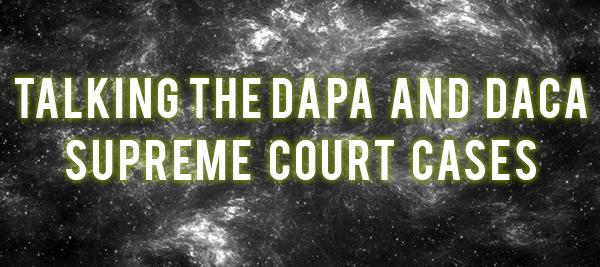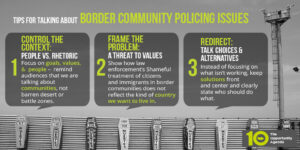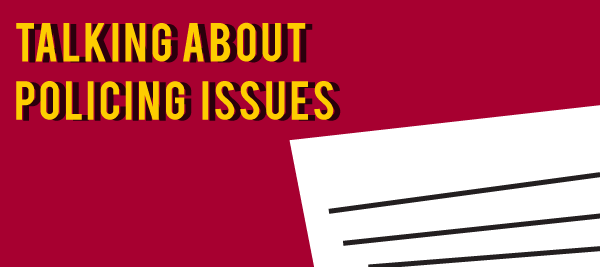Background
Our nation aspires to be a place where everyone enjoys full and equal opportunity. However, our economy is out of balance, with significant barriers impeding the ability of many people to care for their families. At the same time, recent political developments threaten the basic standard of living for many people.
Public opinion research shows that there is shared concern about economic inequality and poverty, despite differences in how to resolve those issues. To build support for our solutions, we need to proceed strategically in our messaging. At the same time, public opinion research also shows that many Americans hold seemingly contradictory ideas about how to address poverty as well as negative stereotypes about welfare dependency, government ineptitude, and irresponsible individual choices, as well as implicit and explicit racial, ethnic, and gender biases.
This memo offers communications guidance for talking about anti-poverty initiatives, and economic equality generally, with a range of audiences. It draws on available opinion research, practical experience, and communications principles.
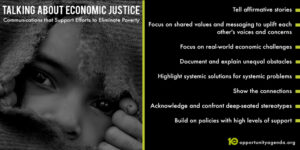
Talking About Poverty
Tell Affirmative Stories: There are a lot of frustrating and incorrect stories about people experiencing poverty and the reasons for it. However, it’s important to avoid restating false arguments. Repeating misinformation, even to refute it, can cause audiences to remember it better, but not necessarily remember that it was wrong. This is particularly true when information is stated in the affirmative, as happens with the “Myth/Fact” format of disputing untruths, for example: “Myth: The flu vaccine can sometimes cause the flu. Fact: The flu vaccine does not cause the flu.” The better approach is to proactively put forward what is true: “The flu vaccine prevents the flu.” Or, “This policy change assumes that poor people are lazy. They’re not.” A better approach: “We all want economic security so that we can provide for our families, but this policy would create huge new barriers in our communities.”
Focus on Shared Values and Messaging to Uplift Each Other’s Voices and Concerns: Emphasize the value of Equal Opportunity, i.e. what you look like, your accent, or your zip code should not predetermine your chances in life. Shared messaging should build on public concerns about growing inequality, low wages, and long-term unemployment while educating audiences about less visible forces like racial and gender bias, globalization, and tax/labor policies. Other key values: Community (we are all in it together and share responsibility for the common good); Family/Security (we should all have access to the resources necessary to provide for ourselves and our families); Pragmatism/Prevention (focusing on what works from a commonsense perspective and addressing root causes before they lead to even bigger problems. Cost saving and efficiency arguments frequently tap this value).
Focus on Real-World Economic Challenges: Move beyond official government definitions and, instead, touch on the real-world challenges facing many Americans, while also highlighting the solutions. For instance, talk about the challenges of holding down two jobs and still having to make choices between groceries and school supplies.
Document and Explain Unequal Obstacles—not only unequal outcomes or disparities. Although there is greater understanding than in the past, many Americans (including many low-income Americans) are not aware of the unequal obstacles facing people trying to move out of poverty. Avoid talking about gaps and instead focus on barriers and obstacles that we have the power to remove through sensible policies.
Highlight Systemic Solutions For Systemic Problems: We need to move audiences beyond an individual understanding of poverty, i.e. the extreme “personal responsibility” narrative that blames poverty almost exclusively on the work ethic and decision making of individuals. Fortunately, most Americans agree that “the primary cause of America’s problems is an economic system that results in continuing inequality and poverty.” We need to build on this and describe how our solutions can reduce or eliminate poverty. We also need to describe those solutions in human terms (i.e. “people living in poverty”) not with acronyms or jargon (i.e. “TANF” or “SNAP”).
Show the Connections: Americans intuitively understand that when our economy is out of balance and favors some more than others, it holds us back as a country and creates an environment in which serious social problems develop and worsen. Showing and telling how economic actors and policies have thrown our economy out of balance and how that affects all of us—storytelling, data and real world examples—is crucial.
Acknowledge and Confront Deep-Seated Stereotypes: Conversations about poverty tend to be racialized and gendered—meaning that audiences bring subconscious stereotypes to terms like “welfare,” “food stamps,” “homelessness,” and even “poverty.” They tend to over-associate poverty with people of color (especially women of color) and the negative stereotypes surrounding them. Remind audiences that achieving racial and gender equity upholds our values and benefits our entire society. Over-document the barriers to equal opportunity—especially racial bias. Lead by talking about how studies have found that employment agencies frequently preferred less qualified white applicants to more qualified black applicants. Acknowledge the progress we’ve made, which helps to persuade skeptical audiences to lower their defenses and have a reasoned discussion rooted in reality rather than rhetoric. Select stories that demonstrate systemic causes and solutions over stories that largely focus on individual choices.
Build on Policies with High Levels of Support: A number of anti-poverty strategies receive high levels of support from the public, i.e. raising the federal minimum wage and increasing taxes on those earning over $1 million annually.
Possible Answers to Frequently Asked Questions
Q: Times are tough for everyone. Why should we give a handout to people who haven’t helped themselves?
A: You and I know our society is at its best when everyone has the opportunity to fulfill their potential and pursue their dreams. America succeeds when every worker can be paid enough to care for his or her family, when every child can move forward with a good education, and when every American can retire in dignity. America works best when we look out for each other and work together as one nation, indivisible. (Messaging via Center for Community Change).
Q: Why are “poor people” so dependent on government assistance?
A: Public structures like Social Security, Medicaid, and Head Start have empowered millions of Americans to get back on track after hardships, retire in dignity, and move from poverty to prosperity. That’s especially important now, with our economy so far out of whack for everyday people. When corporations don’t have to pay people a decent wage, when millions of young people don’t have access to a good education, and when retirement savings can’t keep up with rising costs and stagnant wages, we need public structures that keep the doors to opportunity open for everyone in our country.
Q: Why are so many “poor people” African-American or Latinx?
A: It’s important to have an accurate picture of poverty in the United States. Many different kinds of people in this country are living on the brink. Nearly twice as many white people live in poverty as African-American people, and almost 1.5 times the number of white people are living in poverty as Latinx people. All of these communities are facing barriers to economic stability, and it’s in our interest and power to remove these barriers so that we all have an opportunity to care for our families and have a decent life.
Q: Aren’t there other ways to reduce poverty, like through job creation?
A: Reclaiming the promise of opportunity means demanding an economy that works for everyone, not just large corporations. Robust employment opportunity is important, but even at a 4.9% unemployment rate, 43 million of us are still living in poverty. We need to work together to shore up programs like Social Security, food assistance, and job training initiatives so that we all have the opportunity to live economically stable lives.
For additional communications advice or information on anti-poverty work, we recommend:
- The Opportunity Agenda’s Window of Opportunity II
- Center for Community Change’s Putting Families First: Good Jobs for All
- Frameworks Institute’s Economy and Equity
- Anat Shenkar-Osario’s Don’t Buy It
- Topos’ Taxlandia
- Indivisible’s Guide
- PolicyLink’s All In Nation





